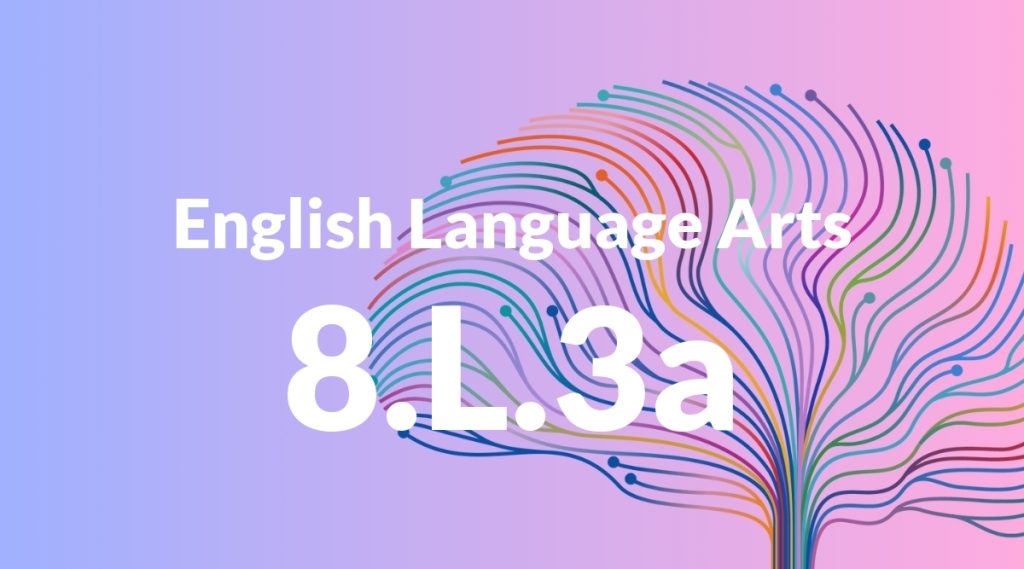Standard: 8.L.3a – Use verbs in the active and passive voice and in the conditional and subjunctive mood to achieve particular effects (e.g., emphasizing the actor or the action; expressing uncertainty or describing a state contrary to fact).
Grade level: Grade 8
Subject: English Language Arts
Domain: Language
Teacher Overview
This standard focuses on the use of verbs in various voices and moods to achieve specific effects in writing. Mastering this standard will enable students to enhance their writing by choosing the most effective verb forms to convey their intended meaning, thereby improving their overall communication skills. Students should have a foundational understanding of verb tenses, active and passive voice, and the concept of mood in verbs to tackle this standard effectively.
After mastering this standard, students will be able to use verb moods and voices effectively in their writing to convey specific meanings and effects. They will also be able to analyze texts more critically, understanding the author’s choices and the impact of those choices on the reader.
Common Misconception 1
A common misconception is that the passive voice is always incorrect or less effective. This is not true; the passive voice can be very effective in certain contexts, such as scientific writing or when the actor is unknown or less important.
Intervention 1
To address this misconception, provide students with examples where passive voice is more appropriate and effective. Discuss contexts like scientific reports or historical accounts where the focus is on the action rather than the actor.
Common Misconception 2
Another common misconception is confusing the conditional and subjunctive moods. Students might think they are interchangeable, but each mood serves a different purpose and conveys different meanings.
Intervention 2
Use clear, contextual examples and practice sentences that highlight the differences between conditional and subjunctive moods. Role-playing scenarios and sentence transformation exercises can also help clarify these differences.
Prerequisite Knowledge
Students should have a basic understanding of verb tenses, active and passive voice, and the general concept of mood in verbs.
Subsequent Knowledge
Students will develop advanced writing skills, including nuanced expression and varied sentence structures. They will also be able to critically analyze texts for the author’s use of verb moods and voices.
Instructional Activities
- Have students write a short story using a mix of active and passive voice.
- Create a worksheet with sentences requiring students to change verbs to the conditional or subjunctive mood.
- Analyze a passage from a historical speech for use of active and passive voice.
- Conduct a peer review session where students identify and discuss the use of verb moods and voices in each other’s writing.




